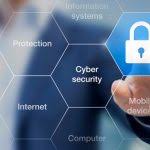The bedrock of digital defense Understanding the fundamental principles of cybersecurity.
Cybersecurity is a fundamental necessity. From individuals managing personal data to organizations safeguarding sensitive information, everyone interacts with digital platforms and, therefore, needs to grasp the core principles that underpin effective cybersecurity. Think of these principles as the building blocks of a secure digital environment, dictating how we protect information, maintain trust, and ensure reliable access.
These fundamental principles are often summarized as CIAAN, a mnemonic encompassing Confidentiality, Integrity, Availability, Authenticity, and Non-Repudiation.
Let’s delve into each of these, exploring their significance and practical applications:
1. Confidentiality: Protecting Secrets
Confidentiality is arguably the most intuitive principle. It focuses on preventing unauthorized access to sensitive information. Think of it as keeping digital secrets safe. This means ensuring that only individuals or systems with the proper authorization can view, use, or disclose certain data.
Practical Techniques for Confidentiality:
* Encryption: Transforming data into an unreadable format, requiring a key for decryption. This is crucial for protecting data both in transit (e.g., during online transactions) and at rest (e.g., stored on a hard drive).
* Access Control: Implementing policies that restrict access to data based on roles and responsibilities. This ensures that employees only have access to the information they need to perform their jobs.
* Data Masking: Concealing sensitive data by replacing it with realistic but non-sensitive alternatives. This allows developers and testers to work with data without exposing real customer information.
* Secure Storage: Employing measures like physical security and strong passwords to protect storage devices containing sensitive data.
2. Integrity: Ensuring Accuracy and Reliability
Integrity goes beyond simply keeping data secret; it’s about ensuring that the data is accurate, complete, and unchanged. It’s about guaranteeing the trustworthiness of the information we rely on. A breach of integrity can have devastating consequences, from incorrect financial records to compromised research data.
Practical Techniques for Integrity:
* Hashing: Creating a digital fingerprint of a file or data set. Any alteration to the data, even a single character change, will result in a different hash value, indicating tampering.
* Version Control: Tracking changes to data over time, allowing for rollback to previous versions if necessary. This is particularly important for software development and document management.
* Access Controls: Limiting who can modify data and how. Preventing unauthorized modifications is key to maintaining integrity.
* Regular Data Backups: Creating copies of data and storing them securely. This allows for recovery in the event of data loss or corruption.
3. Availability: Access When You Need It
Availability means ensuring that authorized users have timely and reliable access to data and resources when they need them. This principle focuses on preventing disruptions and ensuring that systems are operational and accessible.
Practical Techniques for Availability:
* Redundancy: Implementing backup systems and data replication to ensure that services remain available even if one component fails.
* Disaster Recovery Planning: Developing a comprehensive plan for restoring services in the event of a major disruption, such as a natural disaster or a cyberattack.
* Load Balancing: Distributing network traffic across multiple servers to prevent overload and ensure consistent performance.
* Regular Maintenance: Performing routine maintenance and updates to prevent system failures and ensure optimal performance.
4. Authenticity: Proving Identity and Origin
Authenticity verifies the identity of users, devices, and data sources. It confirms that something is what it claims to be. In the digital world, where identities can be easily faked, authenticity is crucial for establishing trust and preventing fraudulent activities.
Practical Techniques for Authenticity:
* Multi-Factor Authentication (MFA): Requiring users to provide multiple forms of identification, such as a password and a code sent to their mobile phone.
* Digital Signatures: Using cryptographic techniques to verify the authenticity and integrity of digital documents and software.
* Certificate Authorities (CAs): Trusted third-party organizations that issue digital certificates to verify the identity of websites and organizations.
* Biometric Authentication: Verifying identity using unique biological traits, such as fingerprints or facial recognition.
5. Non-Repudiation: Preventing Denial
Non-repudiation ensures that actions performed by a user or system cannot be denied later. It provides proof of involvement and accountability. This is particularly important in legal and financial contexts, where it’s essential to have evidence of transactions and agreements.
Practical Techniques for Non-Repudiation:
* Digital Signatures: As mentioned earlier, digital signatures not only verify authenticity but also provide non-repudiation, as the signature is uniquely linked to the signer.
* Audit Trails: Recording all actions performed by users and systems, creating a detailed history of events.
* Secure Logging: Implementing secure logging mechanisms to prevent tampering with audit logs.
* Transaction Logs: Maintaining detailed records of all transactions, including the participants, time, and date.
Putting it all together: A Holistic Approach
These five principles are not isolated concepts; they are interconnected and should be implemented together in a holistic approach to cybersecurity. For example, strong access controls are essential for both confidentiality and integrity. Similarly, a robust authentication system contributes to both authenticity and non-repudiation.
Beyond the Basics: Continuous Learning and Adaptation
Cybersecurity is a constantly evolving field. New threats emerge daily, and attackers are constantly developing new techniques to bypass security measures. Therefore, it is crucial to stay informed about the latest threats and vulnerabilities and to continuously update your security practices. This includes:
By understanding and implementing these fundamental principles of cybersecurity, individuals and organizations can significantly reduce their risk of becoming victims of cyberattacks. It’s not just about technology; it’s about building a security conscious culture and embracing a proactive approach to protecting valuable digital assets. In the digital age, cybersecurity is not optional; it’s essential for success and survival.







